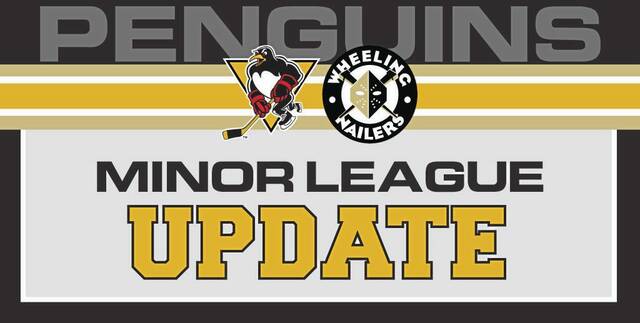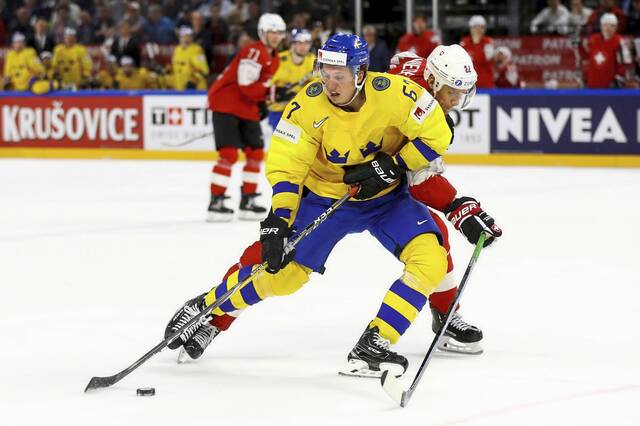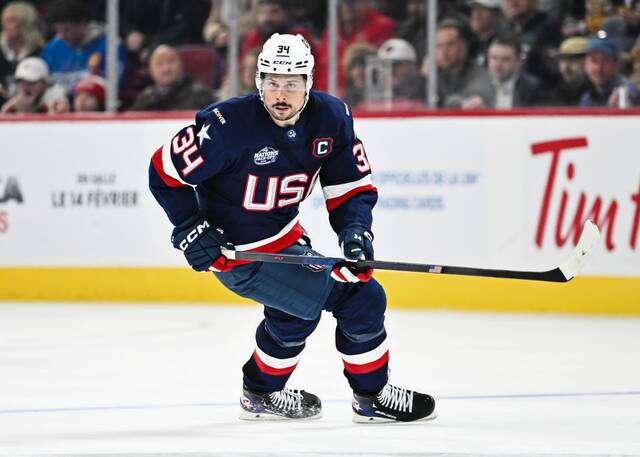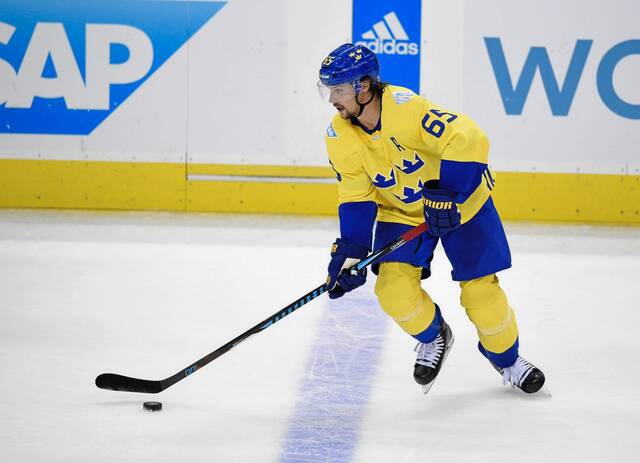In August, Penguins general manager Jim Rutherford let it be known he didn’t want to utilize any buyouts while crafting his roster in advance of the NHL’s 2020-21 season.
They were a last resort.
“That’s the fallback position, buyouts, if we have to get to that,” Rutherford said. “I don’t believe we’ll have to get to it. But that’s the safeguard if we’re going to be over the cap.”
On Tuesday, Rutherford officially utilized that safeguard when defenseman Jack Johnson cleared unconditional waivers and had the final three years of his five-year contract bought out by the team.
That certainly wasn’t an ideal ending for Johnson’s time with the Penguins, particularly for Rutherford who relentlessly defended Johnson in the face of constant criticism.
But it was necessary for the Penguins to be compliant with the league’s salary cap, which will remain flat at $81.5 million because of the NHL’s revenues being damaged by the coronavirus pandemic.
“When we signed Jack, we thought the cap was still going up,” Rutherford said by phone on Monday. “With (the coronavirus pandemic), the cap now is flat for the next few years.”
The flat cap has forced a handful of Rutherford’s peers to adopt measures such as buyouts in order to get their payrolls in order for 2020-21.
Within the past two weeks, there have been six buyouts of contracts with a combined salary cap hit of $31.225 million.
On Tuesday alone, a day after the Penguins announced Johnson’s buyout, the Montreal Canadiens bought out defenseman Karl Alzner, and the Detroit Red Wings did the same with forward Justin Abdelkader.
Johnson’s buyout hasn’t been the only tactic Rutherford utilized to become salary cap compliant.
The team’s trade of forward Nick Bjugstad on Sept. 11 involved salary retention. In this case, the Penguins agreed to hang on to half of Bjugstad’s salary cap hit of $4.1 million.
That leads to ample “dead” money on the Penguins’ salary cap.
Between Bjugstad’s retained cap hit of $2.05 million and Johnson’s remaining cap hit of $1,666,667, the Penguins will have a total of $3,216,667 on their salary cap for the 2020-21 season devoted to players not on the roster.
While having any “dead” money is hardly ideal, it offers immediate benefits for Rutherford.
“We’ll do this with the glass half full or the glass half empty,” Rutherford said. “You’re right in how you explained it. But if you do it the other way, it’s about $4 million that we’ve gained for this year that we’re not paying out.”
To be precise, the Penguins gained $3,633,333 in salary cap space by jettisoning Bjugstad and Johnson.
For a team that routinely spends to the salary cap in the name of pursuing the Stanley Cup, “dead” money can be a considerable impediment.
But it’s not unique.
Of the NHL’s 31 teams, 23 are expected to carry “dead” money on their salary cap for 2020-21. Nine other teams will have a higher figure on their payroll than the Penguins for players no longer on the roster.
According to Cap Friendly, two teams will even have “dead” money figures in eight figures.
Of note:
• The Penguins aren’t even the biggest spenders of “dead” money in the Metropolitan Division. That honor goes to the New York Rangers, who lead the NHL with a figure of $12,994,444. That number ballooned last week when the franchise opted to buy out the final year of franchise goaltender Henrik Lundqvist’s contract.
• Former Ducks forward Corey Perry, now a member of the Dallas Stars, has the biggest individual “dead” money cap hit at $6.625 million as a result of the Ducks buying him out in 2019.
• Four players have “dead” money cap hits with multiple teams: Forwards Ilya Kovalchuk (New Jersey Devils and Los Angeles Kings), Ryan Spooner (Vancouver Canucks and Rangers), goaltender Roberto Luongo (Florida Panthers and Canucks) and defenseman Dion Phaneuf (Ottawa Senators and Kings).
• The Panthers have about $3.425 million of “dead” money going to goaltenders between Luongo, whose retirement in 2019 had ramifications for the Canucks as well due to salary retention, and Scott Darling, who was bought out in 2019.
• The Carolina Hurricanes’ only “dead” money cap hit belongs to forward Alexander Semin, who was signed by Rutherford, then Carolina’s general manager, to a five-year contract in 2013 but was bought out in 2015.
• The Toronto Maple Leafs are still accouting for $1.2 million of forward Phil Kessel’s salary as a result of their 2015 trade to the Penguins. Kessel is currently a member of the Arizona Coyotes.
Chances are, once the NHL’s 2020-21 season begins to get closer, a lot of teams might take on more “dead” cap money in the form of sending some players to the American Hockey League in order to become compliant. The Penguins did this throughout the 2019-20 season with goaltender Casey DeSmith, who spent the bulk of the season with Wilkes-Barre/Scranton. That transaction required the Penguins to retain $175,000 of his $1.25 million salary cap hit on the books for the duration of his assignment.
Regardless, the Penguins won’t be alone in accounting for players no longer on their roster in 2020-21.
“I don’t think we’ll be the only one,” Rutherford said. “We’ll see how it plays out. But I would suspect two-thirds of the teams are working very hard to get their cap in place.”









